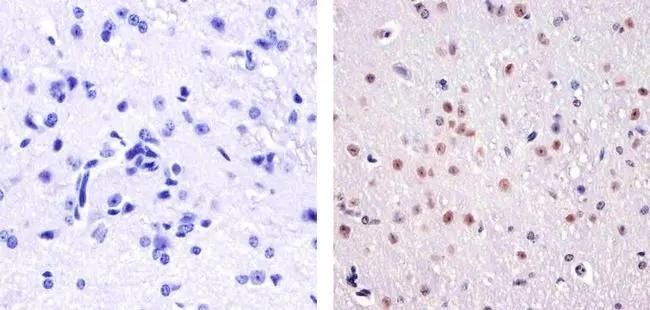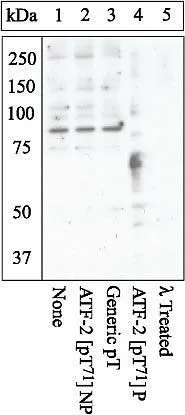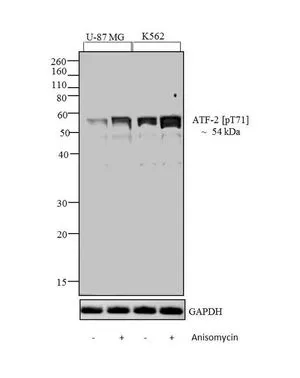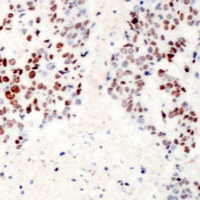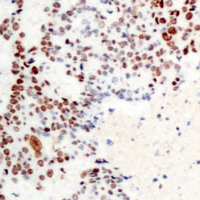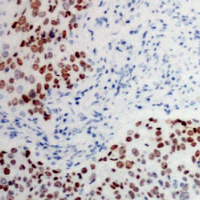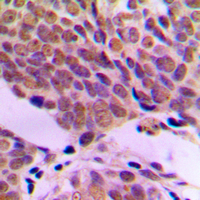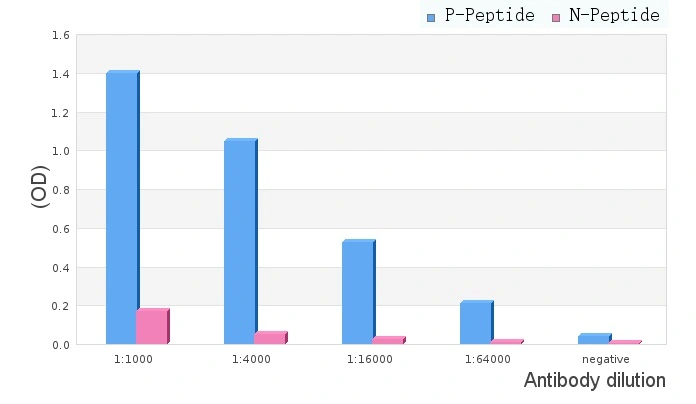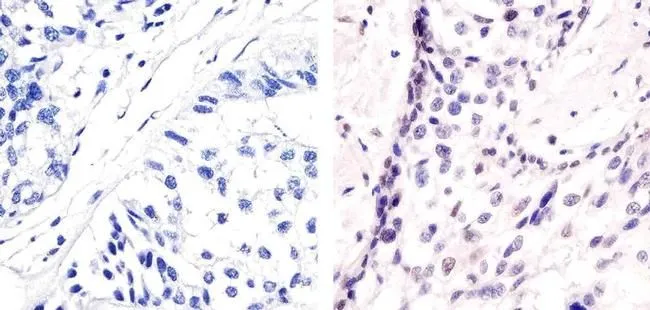
IHC-P analysis of human breast carcinoma tissue using GTX24736 ATF2 (phospho Thr71) antibody. Right : Primary antibody Left : Negative control without primary antibody Antigen retrieval : 10mM sodium citrate (pH 6.0), microwaved for 8-15 min Dilution : 1:20
ATF2 (phospho Thr71) antibody
GTX24736
ApplicationsWestern Blot, ImmunoHistoChemistry, ImmunoHistoChemistry Paraffin
Product group Antibodies
TargetATF2
Overview
- SupplierGeneTex
- Product NameATF2 (phospho Thr71) antibody - Orthogonal Validated
- Delivery Days Customer9
- Application Supplier NoteWB: 1-2 microg/ml. IHC-P: 1:20. *Optimal dilutions/concentrations should be determined by the researcher.Not tested in other applications.
- ApplicationsWestern Blot, ImmunoHistoChemistry, ImmunoHistoChemistry Paraffin
- CertificationResearch Use Only
- ClonalityPolyclonal
- ConjugateUnconjugated
- Gene ID1386
- Target nameATF2
- Target descriptionactivating transcription factor 2
- Target synonymsCRE-BP1, CREB-2, CREB2, HB16, TREB7, cyclic AMP-dependent transcription factor ATF-2, cAMP response element-binding protein CRE-BP1, cAMP responsive element binding protein 2, formerly, cAMP-dependent transcription factor ATF-2, cyclic AMP-responsive element-binding protein 2, histone acetyltransferase ATF2
- HostRabbit
- IsotypeIgG
- Protein IDP15336
- Protein NameCyclic AMP-dependent transcription factor ATF-2
- Scientific DescriptionThis gene encodes a transcription factor that is a member of the leucine zipper family of DNA binding proteins. The encoded protein has been identified as a moonlighting protein based on its ability to perform mechanistically distinct functions This protein binds to the cAMP-responsive element (CRE), an octameric palindrome. It forms a homodimer or a heterodimer with c-Jun and stimulates CRE-dependent transcription. This protein is also a histone acetyltransferase (HAT) that specifically acetylates histones H2B and H4 in vitro; thus it may represent a class of sequence-specific factors that activate transcription by direct effects on chromatin components. The encoded protein may also be involved in cells DNA damage response independent of its role in transcriptional regulation. Several alternatively spliced transcript variants have been found for this gene [provided by RefSeq, Jan 2014]
- Storage Instruction-20°C or -80°C,2°C to 8°C
- UNSPSC12352203

